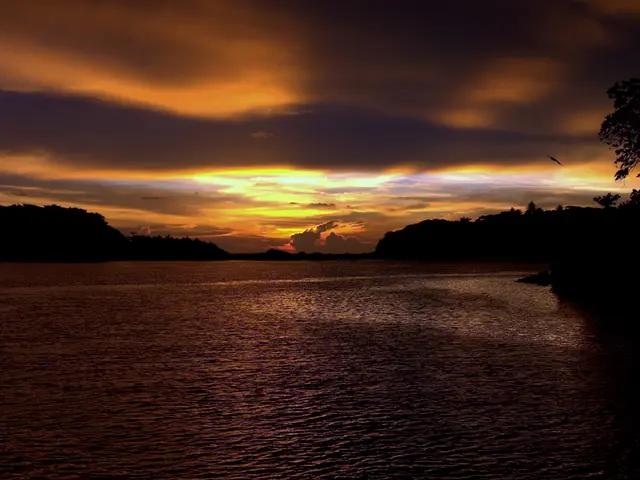Seaside Safeguarding: Facing Climate Change Challenges on Schleswig-Holstein's Shores
Autumnal inspections of dykes along the west coast of Schleswig-Holstein concluded on Föhr Island last week, marking a quieter storm surge season than the previous year. The 300 hydraulic engineers in charge of coastal protection, working 365 days a year, praised the productivity of local shepherds that helped maintain a dense grass cover, thereby preventing significant repair work.
Despite the success of recent inspections, October saw a destructive display of nature's fury. Storms in the Baltic Sea flooded dykes, caused severe damage, and resulted in considerable cliff breakoffs and infrastructure destruction. Environment Minister Tobias Goldschmidt (Greens) emphasized the need to address climate change's threats on the Eiderstedt peninsula, home to 18,000 people and over 2 billion euros of material assets protected by the diligent efforts of these engineers.
The continuous push for coastal protection is vital to counteract climate change's aggressive measures. Schleswig-Holstein's North Sea dykes are being elevated gradually to withstand storm surges, spurred on by rising sea levels. More than 360 kilometers of dykes along its North Sea coast fall under state protection, with numerous regional dykes on the islands defending against the forceful Baltic Sea barrage.
Nurturing nature's resilience is instrumental in the fight against climate change. Research initiatives, such as ZOBLUC, by GEOMAR Helmholtz Centre for Ocean Research Kiel, seek to quantify how seagrass meadows can serve as carbon sinks to the world's oceans. Additionally, community participation in the seagrass restoration process has proved successful, and further initiatives aim to promote the planting and protection of seagrass species.
The Climate Change Adaptation Strategy for the Wadden Sea is currently undergoing reevaluation. When completed, the reviewed strategy will provide a supporting framework for the preservation of this at-risk ecosystem, incorporating local environmental conditions. Moreover, efforts to improve the overall European Union's renewable energy production plan will require addressing offshore facilities and grid connections impacting the coastal environment.
The unique beauty of the Wadden Sea World Heritage site, which includes parts of Schleswig-Holstein, deserves protection. Legislation and trilateral management instruments have been implemented to protect this UNESCO-designated site extending beyond the designated boundaries. Resilient and prepared for the future, the North Frisian Wadden Sea, whose history is marked by shipwrecks, continues to be a testament to the relentless power of nature and the unending commitment to safeguarding its precious acres.




